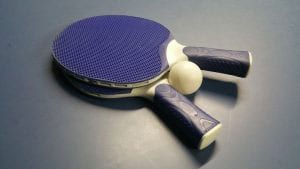The Times Now News recently featured an article that highlighted a study by a group of NYU Langone scientists. The study paper was published October 6th, 2021 in the journal Nature describing astrocytes’ effect on cell death. The scientists claim that the breakthrough may eventually offer relief to millions.
About Astrocytes
Astrocytes are star-shaped cells that are known to nourish neurons. They also assist in clearing toxic particles that have accumulated in the brain.
Previous laboratory tests conducted on mice indicated that astrocytes release toxic fatty acids that kill damaged neurons.
It is for these reasons that the scientists questioned whether there might be ‘corruption’ in the programming code. For example, is there a malfunction in the system that assists in the removal of damaged cells in the brain?
The scientists suspect that the toxic acid system that removes damaged, decaying brain cells could be the cause of many neurological diseases.
The Daily Mail Weighs In
According to an article in the Daily Mail, this finding confirms what neurologists have suspected for years. The theory is based on the fact that Parkinson’s, dementia, and other brain disorders are the result of the death of neurons. Now the scientists discover that astrocytes play a major role in the death of neurons and oligodendrocytes. The latter are cells in the central nervous system that produce protective axon sheaths.
In the study conducted by NYU scientists, the researchers were able to preserve seventy-five percent of the brain cells of laboratory mice.
However, this is just the beginning. Scientists have yet to perform these studies on humans.
NYU Professor Liddelow Agrees
The lead researcher, Dr. Shane Liddelow, NYU professor, echoed that their findings confirm that astrocytes’ production of toxic acids is critical to the death of brain cells. Professor Liddelow further stated that scientists have a new target to treat and possibly prevent a number of neurodegenerative diseases.
In a 2017 research paper, Professor Liddelow was right on target when he wrote that A1 astrocytes are in abundance in many neurodegenerative disorders. He added that these findings explain why the central nervous system’s neurons die after being severed.
Testing the Theory on Laboratory Animals
The NYU researchers based their study on the theory that there are two fatty acids responsible for the death of decaying neurons. They tested this theory on mice that had brain injuries.
Half of the brain-injured group was genetically engineered to halt the production of phosphatidylcholines and long-chain saturated free fatty acids. Then they were compared to a control group.
The group that was genetically engineered had seventy-five percent of their neurons survive. This compares to the group of normal mice with only ten percent survival of neurons.
Professor Liddelow and associates believe that their discovery may be extremely valuable in future research for treating brain diseases. However, he cautioned that currently the technique has only been tested on mice and is not yet applicable to humans.







